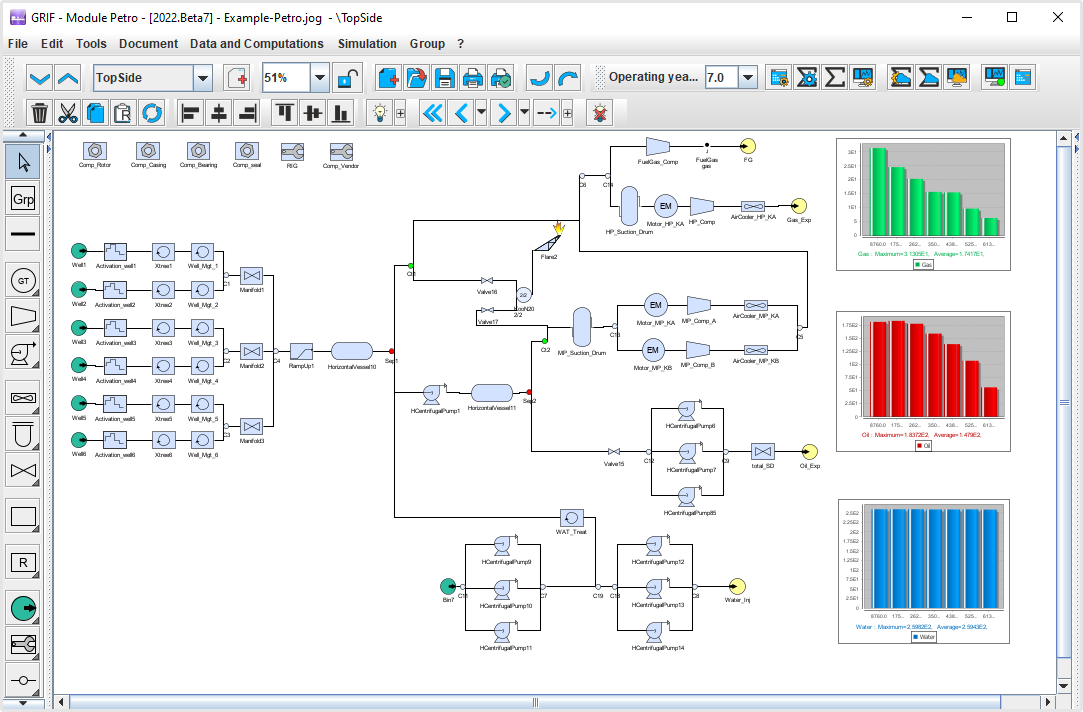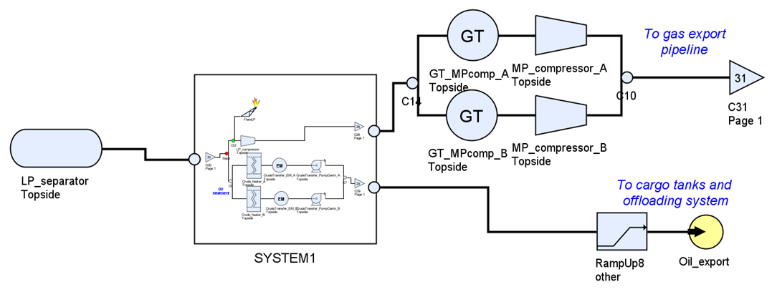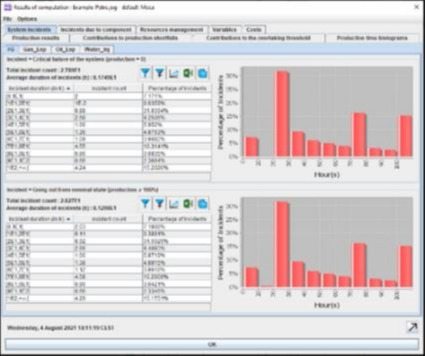
The Petro module is a decision-making tool for evaluating the production availability of your installations.
Petro is used to model and simulate multi-flow process systems in a number of industrial sectors (oil & gas, distribution, etc.) in order to calculate production availability. This decision-making tool can be used to optimize the design of a given unit by comparing the production availability of various architectures, in order to identify weak points and check that the targets defined for the system are being met. This module uses the MOCA-RP (for MOnte-CArlo - Petri nets) high-speed calculation engine, owned by TotalEnergies, as its names suggests, is based on the Monte-Carlo simulation and which is pushing the boundaries of modeling.










